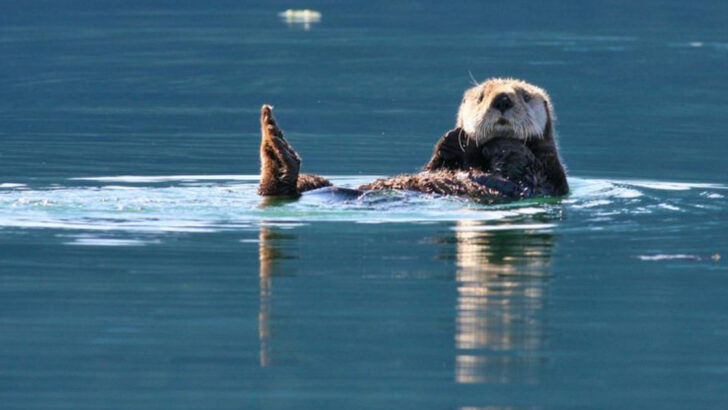Sea otters are not the cuddly cartoon characters people think they are.
Sure, they float on their backs and hold hands—but behind those button eyes is a fierce, clever, and slightly chaotic marine mammal with a serious appetite and a few secrets up its fur.
Over time, these adorable creatures have picked up a load of myths that just won’t quit. Some are harmless. Others? Wildly off-base. Either way, it’s time to set the record straight.
Here are 13 sea otter myths people love to believe—and the surprising truths that make the real animals even more fascinating.
Myth: Sea Otters Are Lazy
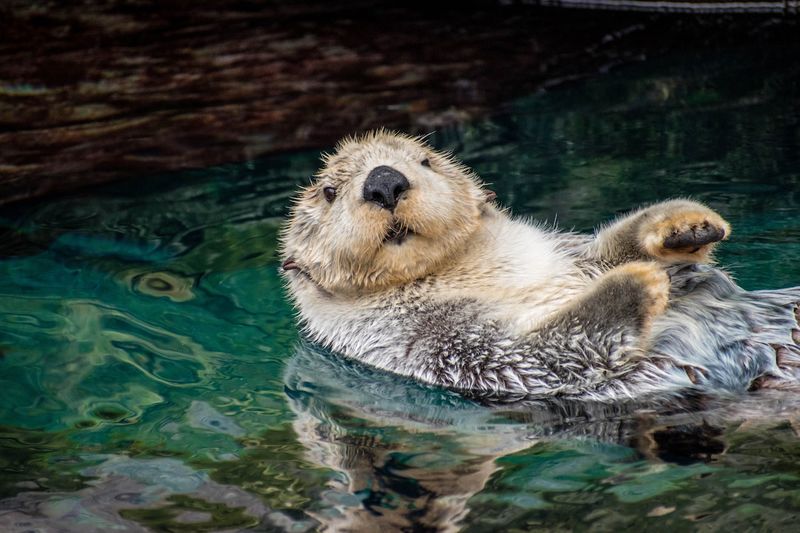
Sea otters are often perceived as lazy due to their habit of floating on their backs. However, this behavior is not laziness. These creatures are incredibly active! When they’re not resting, they spend hours foraging for food, grooming their dense fur, and playing with fellow otters.
Their playful antics are a testament to their energetic nature. Observing them dive and twist through the water reveals their agility and speed. Sea otters can hold their breath underwater for up to five minutes, allowing them to explore the ocean depths for food.
So, while they may appear relaxed, they are anything but lazy.
Myth: Sea Otters Are Fish
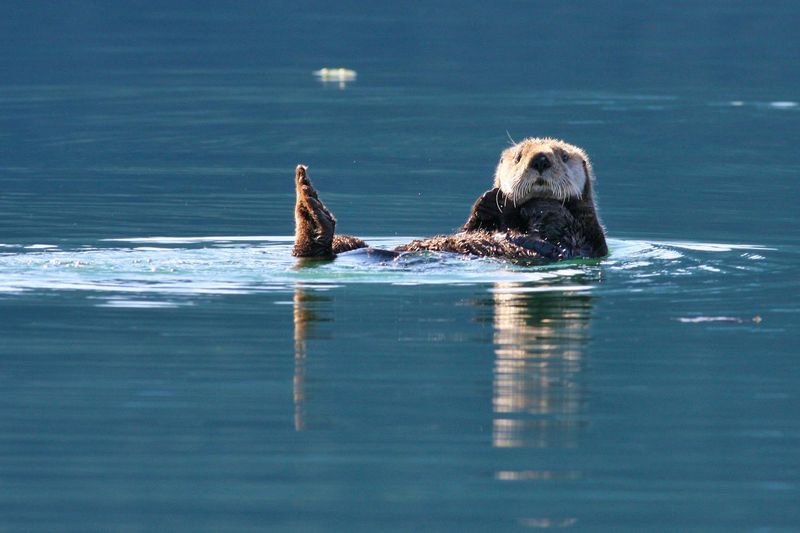
Contrary to popular belief, sea otters are not fish. They are actually marine mammals. This means they have lungs and are warm-blooded, unlike fish that breathe through gills. Sea otters belong to the weasel family and are closely related to other mammals like minks and ferrets.
Their fur is uniquely adapted to keep them warm in cold ocean waters. It is one of the densest in the animal kingdom. This fur acts as insulation, trapping air and keeping them buoyant.
So next time you see a sea otter, remember you’re looking at a fellow mammal, not a fish!
Myth: Sea Otters Are Solitary Animals
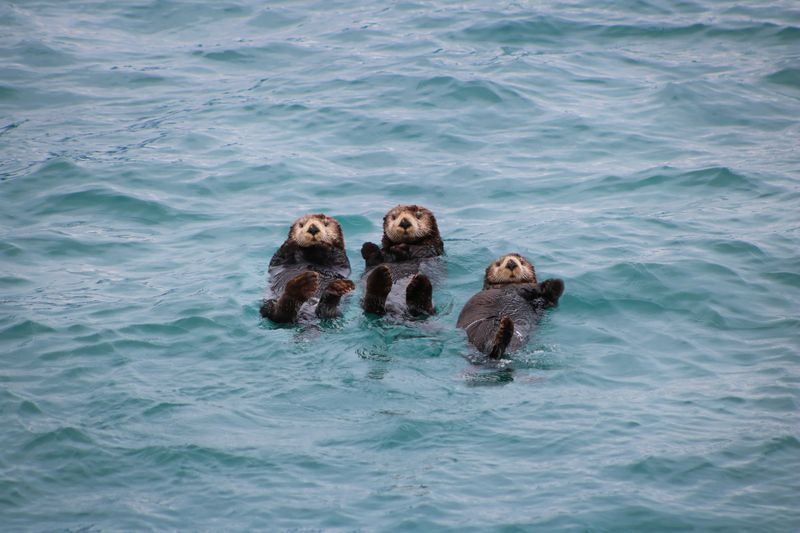
While it’s common to see a sea otter alone, they’re actually quite social creatures. Sea otters often gather in groups called rafts, which can consist of up to a few dozen individuals. These groups help in protection and social interaction.
Rafting together allows them to conserve energy and stay safe from predators. They hold hands or wrap themselves in kelp to avoid drifting apart. This endearing behavior shows their need for social connection.
Their social nature is an essential aspect of their survival, debunking the myth of their solitude.
Myth: Sea Otters Aren’t Important to the Ecosystem

Sea otters play a crucial role in their ecosystem, particularly in kelp forests. By preying on sea urchins, they prevent these creatures from overgrazing on kelp. This helps maintain the health and balance of marine environments.
Without sea otters, sea urchin populations can explode, leading to destruction of kelp forests, which are vital habitats for many marine species. This balance is essential for biodiversity.
Recognizing the sea otter’s role as a keystone species reveals its true importance, far from being insignificant.
Myth: Sea Otters Are Dangerous to Humans

The myth that sea otters are dangerous to humans is misleading. In reality, these animals are generally shy and avoid human contact. Their interactions with humans are typically marked by curiosity rather than aggression.
Most encounters are peaceful, with otters showing interest in divers or kayakers. They rarely pose any threat and are more concerned with their own survival and activities.
Understanding their curious nature can help dispel the notion of them being dangerous, encouraging respectful observation instead.
Myth: Sea Otters Are Endangered
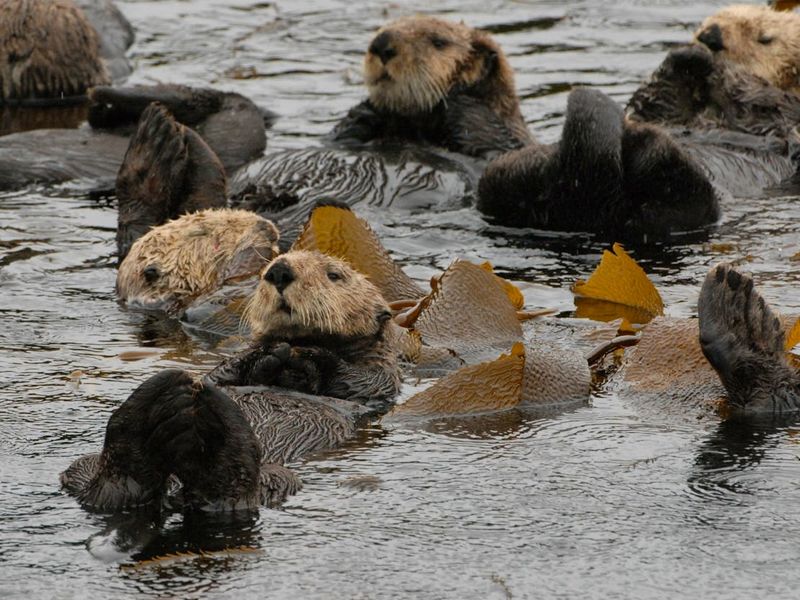
While sea otters once faced the brink of extinction due to fur trade, conservation efforts have significantly improved their populations. Though not yet completely safe, many populations are stable or increasing.
Protected areas and legal protections have contributed to their recovery, allowing them to thrive in certain regions. Public awareness continues to play a crucial role in their conservation.
It’s important to recognize the progress made, while understanding that ongoing efforts are vital to ensure their continued success.
Myth: Sea Otters Don’t Have Predators
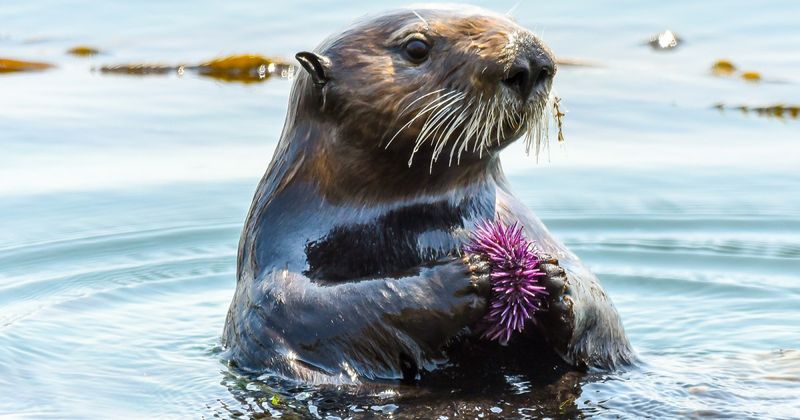
Despite their playful appearance, sea otters face natural predators like orcas and great white sharks. These marine predators can pose serious threats, especially to juvenile and solitary otters.
Otters are vigilant and often stay near kelp forests where they can seek refuge. Their cautious nature helps them avoid becoming prey in the ocean’s vastness.
This myth overlooks the challenges otters face in the wild, highlighting their need for awareness and quick reflexes for survival.
Myth: Sea Otters Don’t Use Tools
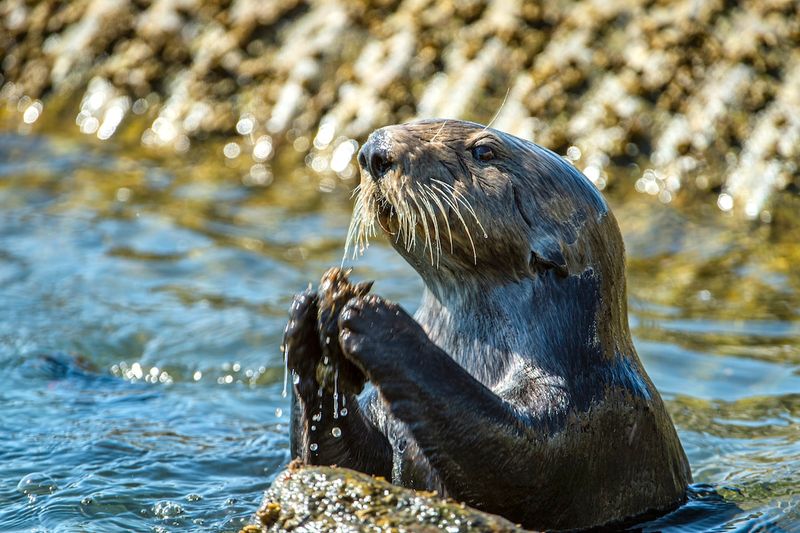
Sea otters are one of the few non-primates known to use tools. They often use rocks to crack open hard-shelled prey like clams and sea urchins, utilizing their bellies as tables.
This tool use showcases their intelligence and adaptability. Watching an otter skillfully open a shell is a testament to their problem-solving abilities.
This behavior not only aids in feeding but also highlights the complexity of their interactions with their environment, debunking the myth of them being simple creatures.
Myth: Sea Otters Are Related to Seals

Though they share the ocean, sea otters and seals are not closely related. Sea otters belong to the weasel family, while seals are part of the pinniped family, which includes sea lions and walruses.
Their anatomy and behaviors differ significantly. Otters are more agile on land, whereas seals are adapted for marine life with their flippers.
Understanding these distinctions helps clarify their separate evolutionary paths, debunking the myth of their close relation.
Myth: Sea Otters Are Always Cute and Cuddly
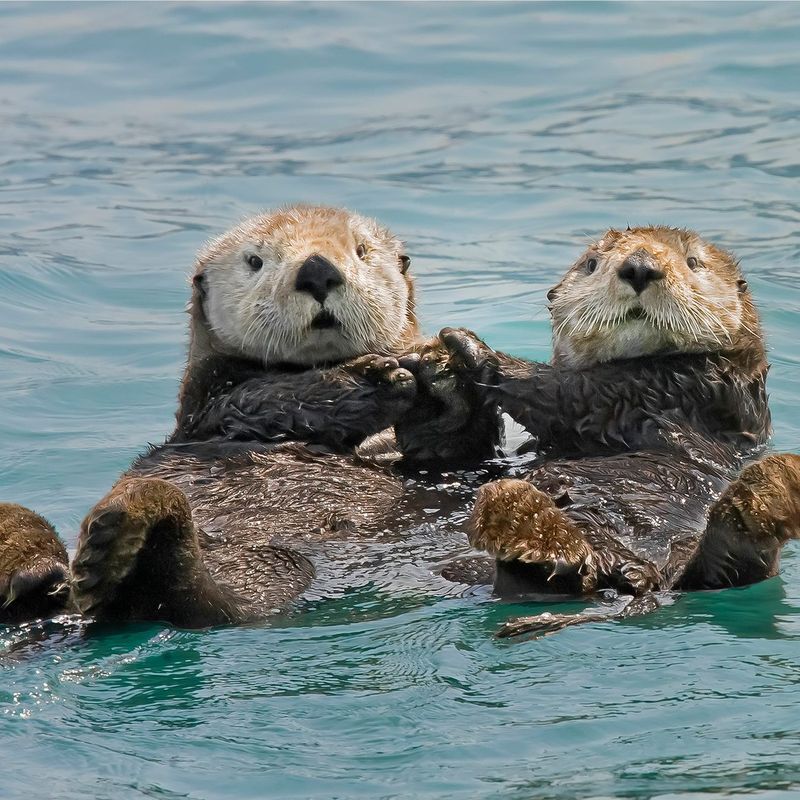
Sea otters may look cute and cuddly, but they are wild animals with natural instincts. In the wild, they can be territorial, especially males defending their area from intruders.
They have sharp teeth and powerful jaws, which are used primarily for feeding but can be employed in defense. Their seemingly adorable demeanor masks their wild nature.
Appreciating them from a distance allows us to enjoy their beauty without forgetting their true nature as wild creatures.
Myth: Sea Otters Only Live in Cold Waters
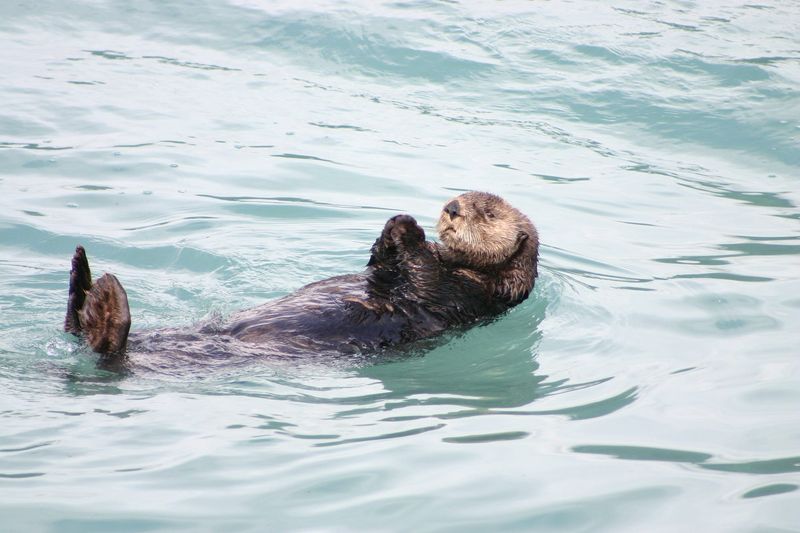
While sea otters are often associated with cold Pacific waters, they can also be found in temperate regions. Their dense fur allows them to adapt to different climates, providing insulation against both cold and moderate temperatures.
Their distribution ranges from the coasts of Alaska to California, showcasing their adaptability. Observing them bask along sunny coastlines reminds us of their versatile nature.
This myth overlooks their wide habitat range, emphasizing their ability to thrive in diverse environments.
Myth: Sea Otters Eat Only Fish
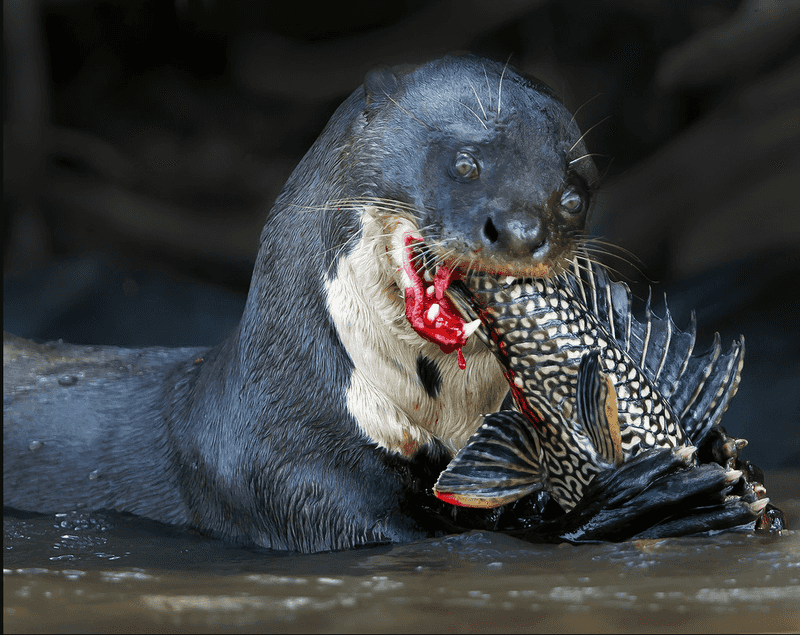
Sea otters have a diverse diet that extends far beyond fish. They are known for their love of shellfish, such as clams, mussels, and sea urchins. Their diet also includes crabs and occasionally small fish.
Their foraging habits are essential for maintaining the ecological balance in their habitats. By eating sea urchins, they protect kelp forests from overgrazing.
Acknowledging their varied diet helps debunk the myth of them being solely fish eaters, highlighting their role in the marine ecosystem.
Myth: Sea Otters Are Not Affected by Human Activity
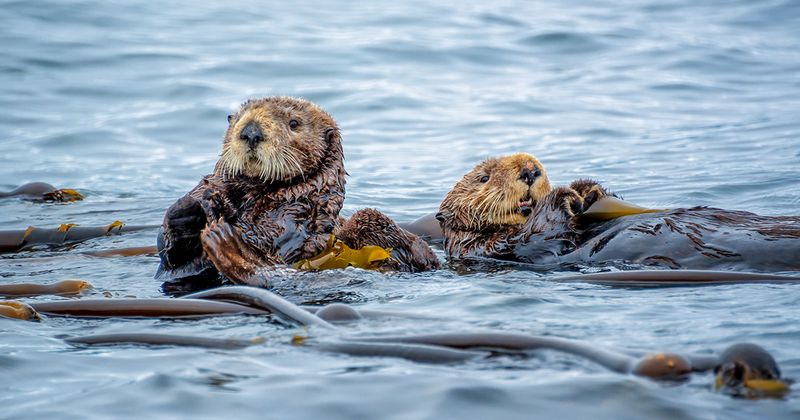
Human activities, such as pollution and habitat destruction, have significant impacts on sea otters. Oil spills are particularly devastating, as they damage the otter’s dense fur and reduce its insulating properties.
Conservation efforts strive to mitigate these impacts, but awareness and action are crucial for their protection. Reducing pollution and supporting marine reserves contribute to their well-being.
Recognizing the effects of human activity underscores the importance of preserving their natural habitats and promoting their survival.

